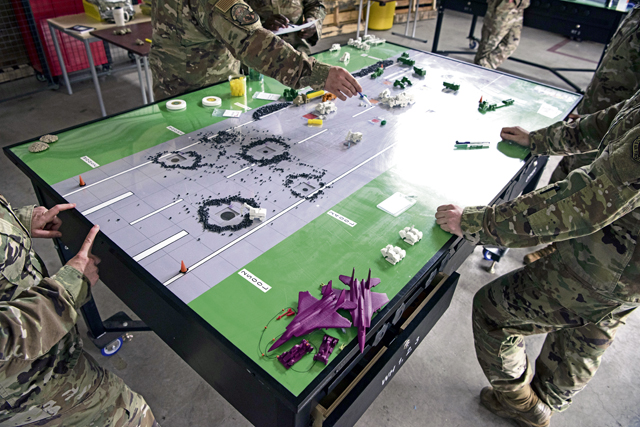
The 435th Construction and Training Squadron conducted a Silver Flag training course July 7-17 to bolster the contingency readiness of total force Airmen across the European theatre.
This was the first Silver Flag course conducted since the COVID-19 outbreak.
Silver Flag’s objective is to train total force civil engineer, force support and logistics readiness Airmen on more than 200 wartime tasks in support of worldwide contingency operations. The 435th CTS is one of three sites in the Air Force that hosts the training, and is the only site that has provided training during the pandemic.
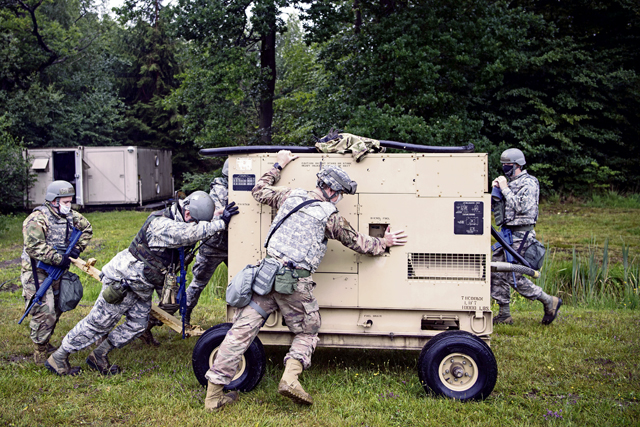
Airmen who attended Silver Flag participated in airfield recovery, aircraft and facility fire rescue, explosive ordnance disposal operations, bare base construction, operations and sustainment.
“We pride ourselves on executing realistic training scenarios in an effort to prepare our students for war-time circumstances,” said Master Sgt. Benjamin Hall, 435th CTS emergency services contingency training section chief. “Personnel from around the world network and come together as a team in our Silver Flag courses, simulating a deployed environment.”
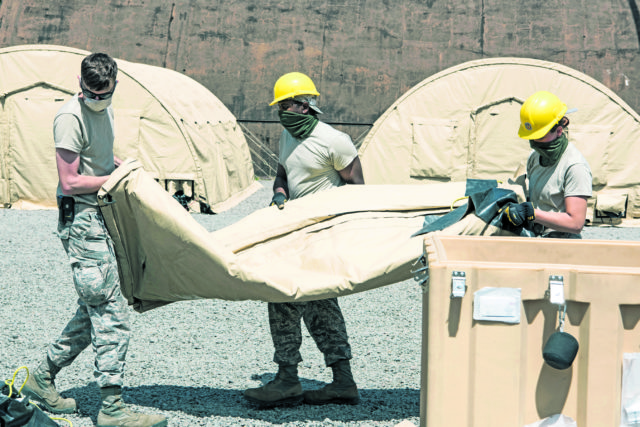
As EUCOM’s premier contingency training unit, the 435th CTS oversaw Silver Flag operations and personnel to ensure safety and mission goals were met.
“The Silver Flag cadre in the 435th CTS are there to ensure students meet the learning objectives safely and effectively,” said Chief Master Sgt. Vincent Schuyler, 435th CTS superintendent. “They ensure students come away from the experience with a deeper understanding and greater respect for their wartime mission.”
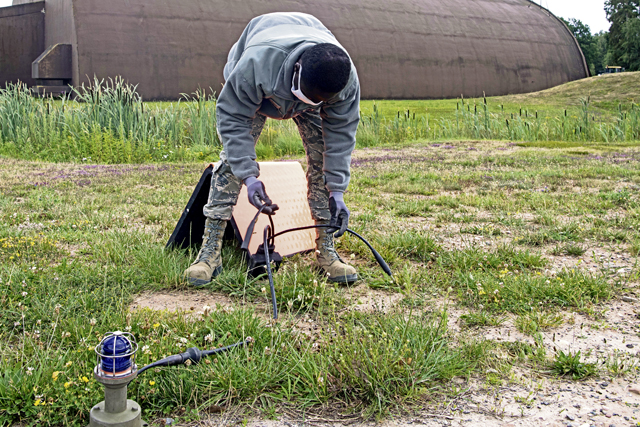
To help hone specific skills in their career field and help Airmen understand their roles on a macro level in a deployment environment, the training was divided into three phases.
“The first part of the training gives each career field a chance to practice their skills on equipment they may rarely get to handle, whether it be installing the Mobile Aircraft Arresting System, or generating water to supply the base from the Reverse Osmosis Water Purification Unit,” said Lt. Col. Seth Platt, 435th CTS squadron commander. “The second part of the training brings each skill set together to show them how their craft contributes to the entire effort of sustaining and recovering a base. The capstone exercise run by the instructors gives the students a chance to truly test their skills in a challenging environment, pushing their limits and giving them confidence in their own abilities.”
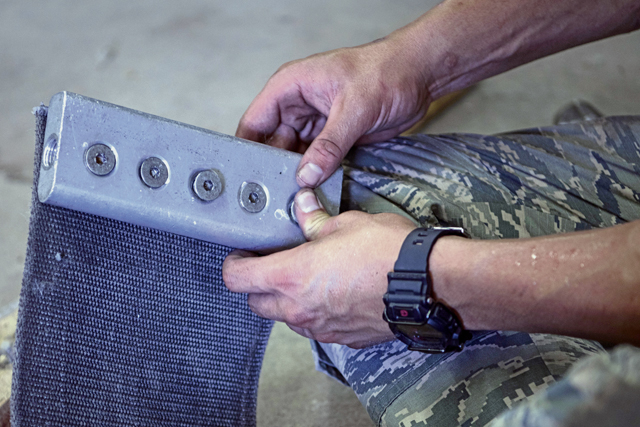
Silver Flag is one of the many training courses the 435th CTS conducts to give combatant commanders the ability to recover a base and restore mission capabilities as soon as possible after an offensive.
“The skills learned at Silver Flag are critical to the civil engineer’s wartime missions of setting up and operating contingency air bases and recovering air fields after an attack,” Platt said. “Without the ability to launch and recover aircraft from an austere or contested environment, the U.S. Air Force would be severely limited as to where and when it could engage the enemy. Our strength is derived from our ability to project air power, and the foundation of that strength is provided by the brave men and women we train at Silver Flag.”
Silver Flag is one of the many tools the 435th Contingency Response Group uses to help build partnership capacity and ensure strategic deterrence.
“When we have open seats within a Silver Flag course, the 435th CRG is sometimes able to get a couple of students in from other countries to see and learn about the capabilities we bring to NATO,” Schuyler said. “We gain the ability to work side by side with our partners, so that if we are operating from a different host nation airfield, they are familiar with what capabilities we would be bringing with us, if we were to deploy to one of their bases.”
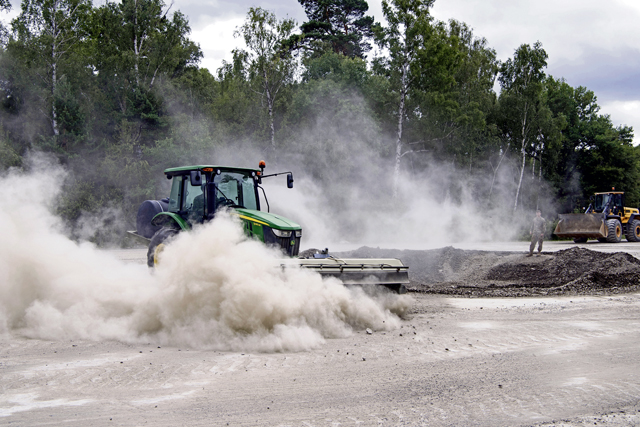
Due to COVID-19 the only Airmen who participated in this iteration of Silver Flag were from Spangdahlem Air Base and Ramstein Air Base.
“To mitigate the spread of COVID-19, the CTS Training Flight has taken several precautions to help protect both the students and instructors,” Hall said. “All classroom tables have been spread apart to maintain the 6-foot spacing requirements, and field exercise facilities are sanitized on a daily basis. Also, all personnel must wear protective masks when entering and moving about the facilities or when social distancing cannot be achieved or maintained.”
Despite the current pandemic, the 435th CTS stays committed to their mission of contingency training.
“There is some risk to starting up Silver Flag training in the midst of this pandemic, but there is perhaps a greater risk that comes from not training our Airmen on how to execute their war-time mission,” Platt said. “We have been extremely meticulous with ensuring safety measures are in place to reduce the risk to students.”
“The significance of carrying out the first Silver Flag course since COVID-19 halted training earlier this year is huge,” Schuyler said. “This class is demonstrating that we can safely conduct training during a pandemic, and it reassures our leadership and allies that we are still able to provide mission capable civil engineers, force support and vehicle operator personnel who can execute the mission, even with today’s challenges.”


